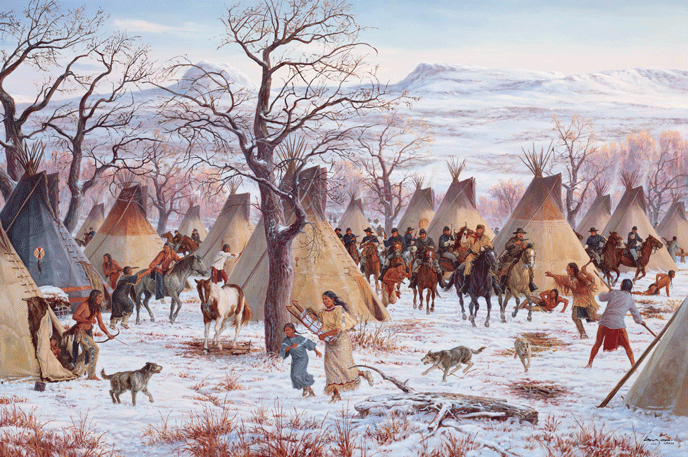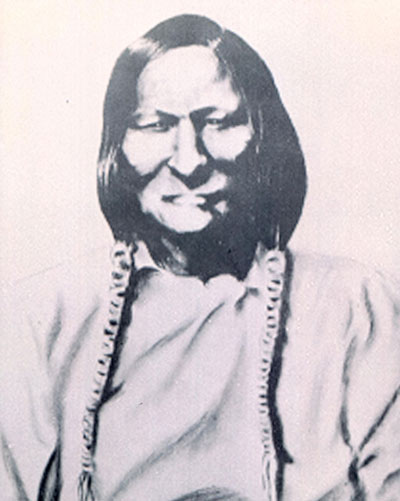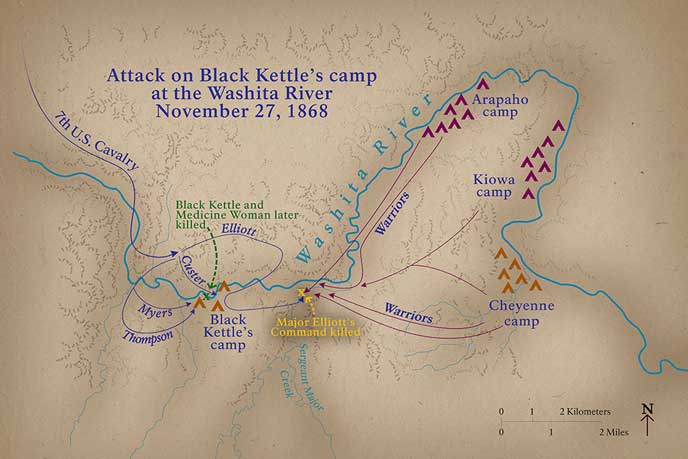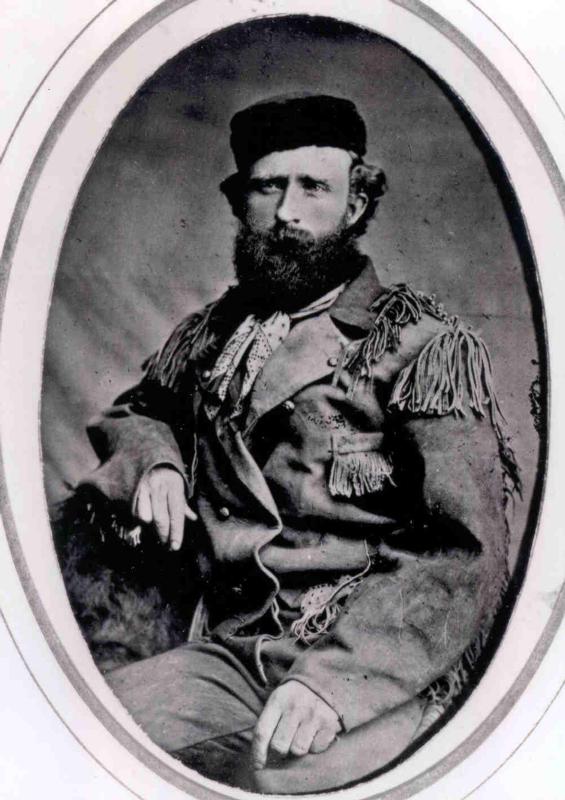The outdoor living history museum at Conner Prairie is a
real treat. At the park, visitors can travel through much of 19th
century Indiana history from a Lenape Indian village in 1816, to a small
community in 1836, to the only Civil War action in the state in 1863. But this
is not a place just for history fans. In fact, hundreds of families shared the
park with me on the Thursday that I visited. It is great see kids running
around high on history.
 |
| Conner Prairie is popular with families (Photo by Hunner) |
I teach living history at New Mexico State University so I
have wanted to visit Conner Prairie for years. It is one of the premier such
places in the country. So after I got off Route 66 at St. Louis, I headed to
Indianapolis. For those who are unfamiliar with living history, we immerse
ourselves in past time periods and pretend that we don’t know anything after
that targeted date. For example, at NMSU, we Time Travel to 1912 with local
students. That means we do not know about World War I nor the Great Depression
nor anything else after 1912. With our Time Travels, we invite local classes
from 4th to 12th grades to role play with us, and they are
ignorant of post-1912 events as well. We call this first person interpretation.
Back to Conner Prairie. Their chief of Interpretation, Dr.
Catherine Hughes, gave me a tour of the park. It opened in 1974, which makes it
the oldest living history museum in the country. Catherine talked about some of
the themes that are important to the park and its interpreters—things like the
intersection of history and science which is highlighted in the visitors’
center with interactive exhibits on patents, the electrification of Indiana
farms, wind mills, and the importance of flight in the Hoosier state. Since
this is the bicentennial of Indiana’s statehood, the celebration of that
anniversary figures prominently.
 |
| Dr. Campbell's wife and niece at Prairietown (Photo by Hunner) |
Visitors are asked “What inspires a Hoosier
artist?” That got me to thinking about what inspires me.
Catherine also mentioned a study that Conner Prairie began
in the early 2000s where they put microphones on their visitors and recorded
their comments as they interacted with the park’s interpreters. From this visitor research, they concluded
that they “do a lot more talking then listening. We shouldn’t do that.” A
telling encounter was at the pottery studio where a mother and daughter were greeted
by the interpreter saying “Let me know if you have any questions.” They didn’t
stay long and after they left, the daughter asked: “Why are we leaving? You
like pottery.” The Mom replied: “He’s busy.”
More listening to the visitors, less talking over them. Less
data dump by the interpreters to show that they know their history, and more
meaningful conversations with visitors. They dubbed this “Opening Doors.” Here's my observation: portraying someone from the past who doesn't know anything after that time period might hinder having a conversation, and might get in the way of providing context for modern visitors. So I agree that we need more conversations when we interact with visitors. I wonder if doing third person interpretation where one wears costumes from the time period, but talks to guests from today might create more meaningful exchanges than pretending to be living in the past. I must admit, I am surprised that I am saying this since I have taught first person interpretation since 2002. Let's see how I feel after I visit other first person living history parks.
 |
| Tethered balloon over the Covered Bridge (Photo by Hunner) |
The initial visual that caught my eye at Conner Prairie was
the hot air balloon. To commemorate John Wise’s attempt in 1859 to launch a
balloon that would inaugurate airmail service between Lafayette, Indiana and
New York, a tethered balloon takes visitors some hundred feet or more above the
park. Needless to say, Wise’s airmail service never got off the ground.
The four main attractions for me were the 1816 Lenape
village, the 1820s Conner house, the 1836 Prairietown, and the Civil War attack
on Dupont in 1863.
The Lenape Village at Conner Prairie is lucky to have
Michael Pace, an elder of the Lenape (aka Delaware) tribe from Oklahoma take up
residence every summer at their park. He talks about the history of beads and
makes a variety of beaded items from bracelets to belts to necklaces. And he
talks about the history of his tribe. Originally, the Lenape resided in the
eastern New York, New Jersey, and Pennsylvania area. After contact with
Europeans, they moved fourteen times—the most of any tribe in the United
States. Now they live in eastern Oklahoma and are the 25th largest
tribe in the country.
 |
| Michael Pace, a Lenape elder at the Lenape Village (Photo by Hunner) |
While we were talking, a family came up and asked the Lenape
name for their son and daughter—Hawk and Estella. After teaching them the names,
he and I talked about preservation of native languages. He said of the 539
tribes in the U.S. before contact, only 120 still speak their language. Perhaps
by the next generation, only sixty will remain. Without a language, a unique
culture struggles to survive.
Michael broke for lunch and as I walked with him to the
break room, a seven year old girl rushed out of the Café on the Common and gave
him a big hug. He leaned over, taught her how to say hello in Lenape, and told
her to go back to her family saying that. When I related this to Catherine, she
admitted that Michael got a lot of love at the park.
 |
| The Conner House (Photo by Hunner) |
William Conner built the house that still looks over the
prairie in 1823. He was a fur trader, farmer, land speculator, miller,
merchant, and politician. He married a Lenape woman, MeKinges, and had six
children with her. In 1816, the state decided to move the Lenape to Missouri,
and MeKinges went with her tribe. Other Europeans with Lenape wives went with
them to the new reservation, but Conner remained, remarried, and had ten more
children.
At the 1836 Prairietown, several houses are open for
visitors. I met Elaine, Dr. Campbell’s niece who welcomed me by asking if I
needed medical attention. I told her I had a headache and while Elaine admitted
she was no doctor, told me I would probably need to get leeched when the doctor
returned from his visit to a woman who just had a difficult childbirth. She
dropped her character when no one else was around and talked about her background
in theater and history. She said that some people try to trip her up. For
example, a young boy showed her a cell phone and asked “Do you know what this
is?” She replied “No, do you?” When he said of course, she responded, “Then why
are you asking me?” First person interpreters find various ways to get around
tricky situations like these. I never did see Dr. Campbell, perhaps for the best
since I never have liked getting leeched.
 |
| Shelf full of medicine, including leeches at Dr. Campbells' House (Photo by Hunner) |
I also dropped by the carpenter’s shop and met Daniel
McClure (aka Dennis Adams). He served twenty-six years as an economic analysis
for the Army and then was a tech writer for fourteen years. But he has worked
with wood since he was young and has always liked visiting living history
parks. He makes his own tools and always has something that he is constructing.
He admitted that working with tools and making things out of wood helped
alleviate the challenges of interpreting for the 85,000 school kids that come
through the park every year.
 |
| The Carpenter at Paririetown (Photo by Hunner) |
The “1863 Civil War Journey: Raid on Indiana” depicts the
only town in the state to suffer a Confederate attack. The scene here is the village
of Dupont the day after a Confederate force of 2,500 cavalry led by General
John Hunt Morgan raided that town in July 1863. I crossed through a covered
bridge to get to the site and was directed to a store where Mrs. Gardner
recounted the attack. The museum had installed multimedia so that we saw through
the windows confederates charging across the bridge, entering the store, and
then shooting up the place. Gunshots rang out, a lantern swayed as if hit by a
bullet, and shelving collapsed with cans strewn about.
 |
| The General Store at the Civil War site (Photo by Hunner) |
I then ambled over to First Sargent Josh McClain who put me
and several other adults through a marching drill to make sure that we as new
volunteers were properly trained to expel the Rebs from Indiana. I was able to
talk to him out of character and asked why people should visit Conner Prairie
and this Civil War recreation. He replied: “We offer a lot of things for different
guests. We can learn a lot from history of where we’ve been and where we’re
going. Conversations help build communities.”
 |
| Josh McClain, the drill instructor at Dupont (Photo by Hunner) |
After the brief basic training, I met Private Allen (aka
John) who ushered us into a building that also used multimedia to tell the
story of the raid. With video and rotating tableaux, the story of the attack on
Dupont, the repel of the Confederate raiders, and the ultimate victory of the
Union were shown.
 |
| Mulitmedia presentation at Civil War site (Photo by Hunner) |
Going through the Conner Prairie Interactive Park, I got a
good lesson in 19th century Indiana history. I also learned a lot
about how they do living history. Most interpreters are theater people, some
with history backgrounds. Opening doors strikes a chord with me and will
influence how I do living history and how I teach historical interpretation in
the future. Doing first person interpretation is difficult for the interpreters
and also for the visitors. Done right, it gives us an experience of living in
the past. Conner Prairie Interactive Park does it right.
 |
| Map of the park ar Conner Prairie |
From Indianapolis, I drove down the National Road to Dayton,
Ohio. Next up on Driven by History—the Wright Brothers and the birth of human
flight.




















































